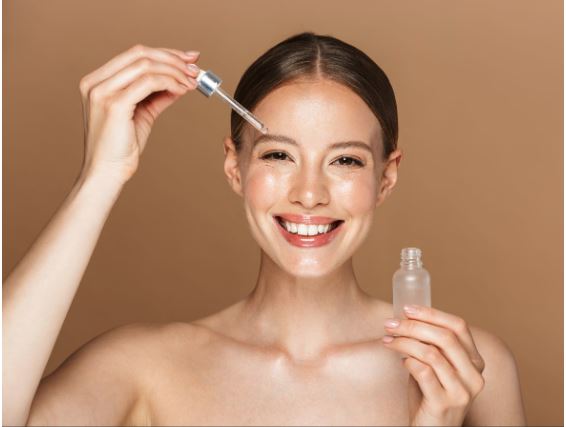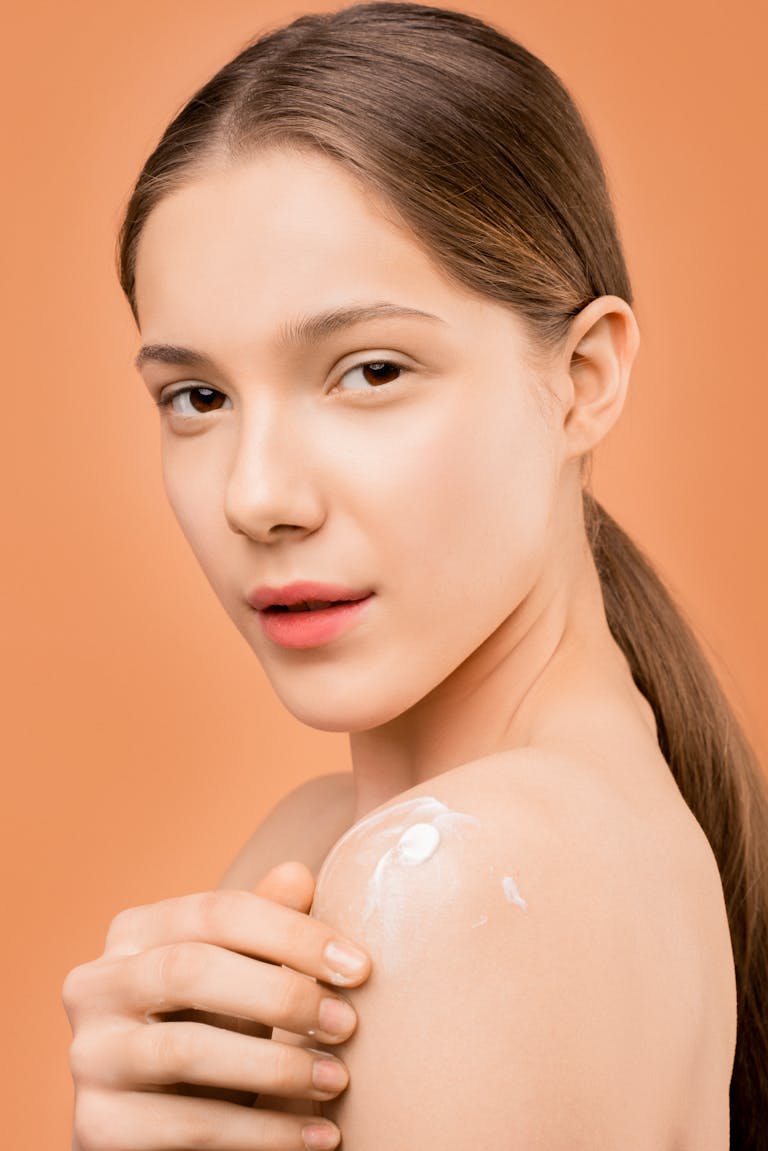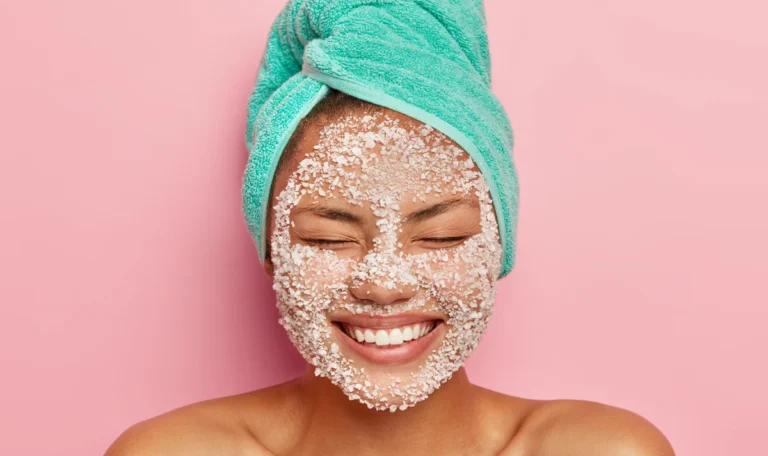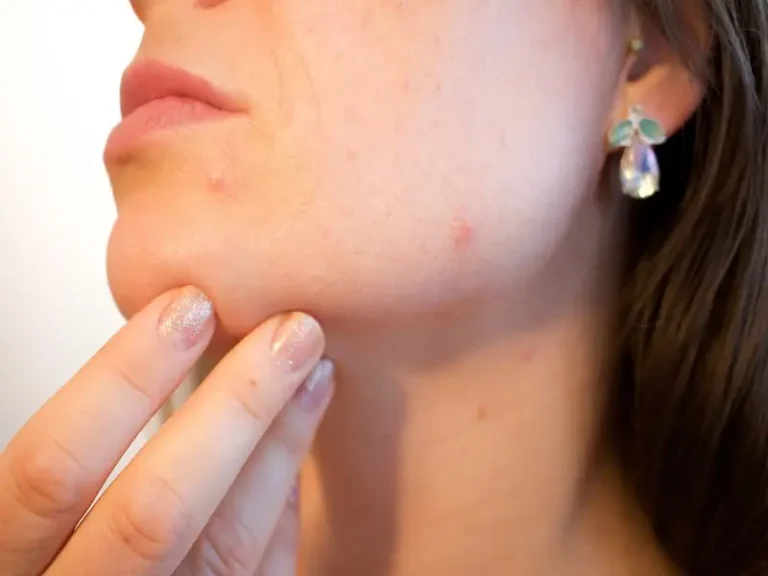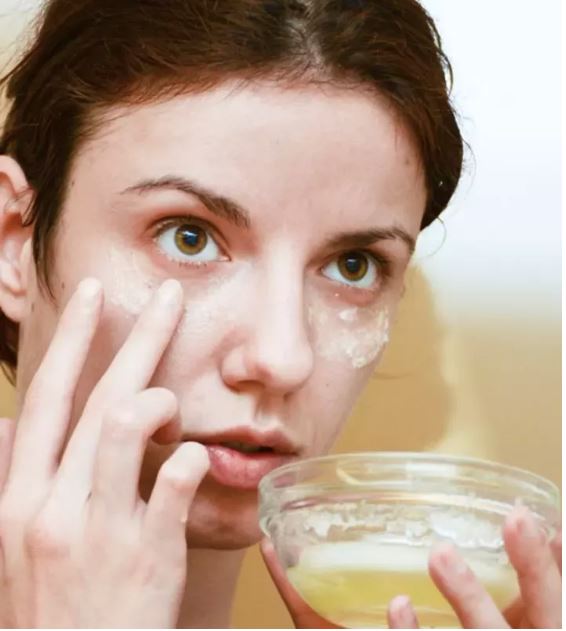10 Powerful Skincare Tips for Reducing Breakouts
Dealing with breakouts can be a real hassle, but managing your skin doesn’t have to be complicated. We’ve gathered 25 powerful tips that can help you keep those pesky pimples at bay. From simple daily routines to the right products, these ideas are designed to help you achieve clearer, healthier skin without the fuss.
Understanding the Impact of Stress on Breakouts
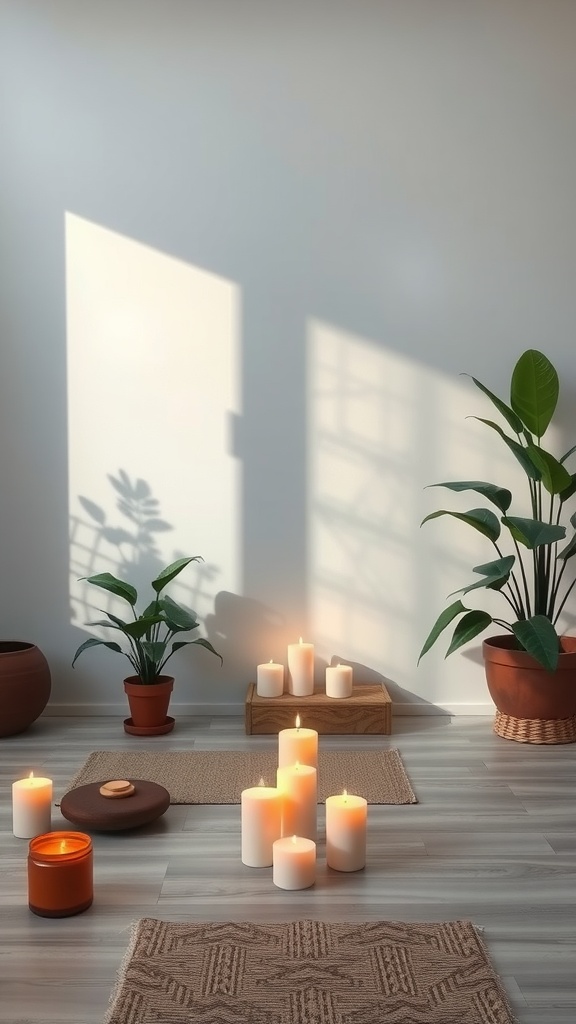
Stress plays a big role in skin health, often leading to unwanted breakouts. The image of a serene space filled with soft candlelight and green plants sets the tone for relaxation. This calm environment emphasizes how creating a soothing atmosphere can help manage stress.
When stress hits, your body produces more cortisol. This hormone increases oil production in the skin, leading to clogged pores and breakouts. Taking time to unwind in a peaceful setting, as shown in the picture, can help counteract these effects.
Simple self-care practices, like lighting candles, meditating, or enjoying a quiet moment surrounded by plants, can lower stress levels. These small actions can contribute to clearer skin by keeping cortisol in check.
Incorporating stress-reducing activities into your routine might be just what you need. Remember, a relaxed mind often leads to a healthier complexion!
Establishing a Consistent Cleansing Routine

Establishing a consistent cleansing routine is key to maintaining healthy skin and reducing breakouts. The image here captures a moment of cleansing, showing someone gently washing their face. This simple act can make a big difference in your skincare journey.
Using the right products, like a gentle cleanser, can help remove dirt and excess oil. It’s important to cleanse your skin both in the morning and at night. This routine keeps your pores clear, which helps prevent breakouts.
Make sure to choose a cleanser that suits your skin type. If you have oily skin, consider a foaming cleanser. For dry skin, a cream-based option is ideal. Remember to be gentle; harsh scrubbing can irritate the skin.
Don’t forget to moisturize right after cleansing. This helps keep your skin hydrated and balanced. A consistent routine, as shown in the image, will lead to clearer, healthier skin over time.
Incorporating Exfoliation into Your Regimen

Exfoliation plays a key role in maintaining clear skin and reducing breakouts. The image shows a hand with a creamy exfoliant on it, ready to be applied. This visual emphasizes the importance of choosing the right products for your skincare routine.
Regular exfoliation helps to remove dead skin cells, unclog pores, and promote cell turnover. This can lead to a smoother and clearer complexion over time. When selecting an exfoliant, look for one that suits your skin type—whether it’s physical, chemical, or a combination of both.
Don’t forget to exfoliate gently. Using too much pressure can irritate your skin, which might lead to more breakouts. Aim for 1-3 times a week, depending on your skin’s sensitivity. After exfoliating, always follow up with a moisturizer to keep your skin hydrated and balanced.
Sun Protection as a Daily Essential
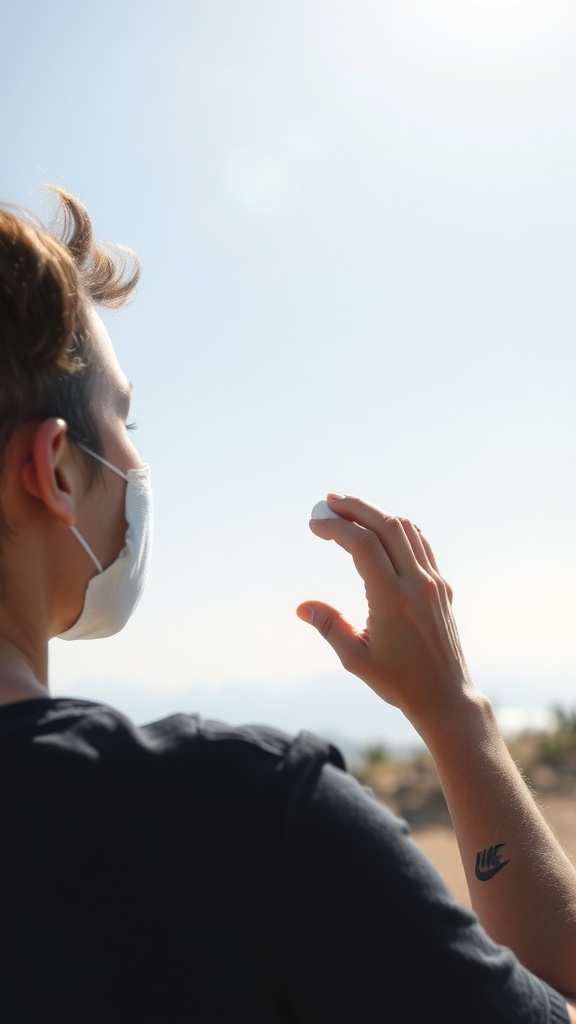
Sun protection is a must-have for anyone wanting to keep their skin clear and healthy. The image shows someone holding sunscreen up to the sky, ready to apply it. This simple act highlights how important it is to make sun protection a part of your daily routine.
Even on cloudy days, harmful UV rays are still present. Applying sunscreen every day can help prevent breakouts and keep your skin looking fresh. Remember, protecting your skin is just as important as cleansing and moisturizing.
Choose a broad-spectrum sunscreen with at least SPF 30. This will shield your skin from both UVA and UVB rays. Don’t forget to apply it generously, and make it your last step in your morning skincare routine. With consistent sun protection, you’ll notice fewer breakouts and a healthier complexion.
Hydration: The Key to Balanced Skin

Staying hydrated is essential for skin health. In the image, two glasses of water symbolize this concept perfectly. One glass contains plain water, while the other has sparkling water. Each option provides hydration, showcasing that you can choose what you enjoy most.
Water helps maintain skin elasticity and keeps it looking fresh. When your body is well-hydrated, your skin can better fend off breakouts and blemishes. Having hydrated skin is like having a smooth canvas for your skincare routine.
To get that glow, aim for at least eight glasses of water daily. You can also boost hydration by including fruits and vegetables in your diet. They contain high water content and additional nutrients that benefit your skin.
Adjusting Your Sleep Habits for Better Skin

Getting quality sleep can work wonders for your skin. The image captures a serene nighttime environment, emphasizing the importance of rest. A cozy bed, soft lighting, and a peaceful atmosphere set the stage for rejuvenation. When you sleep well, your skin gets the chance to repair itself, making bedtime an essential part of your skincare routine.
During sleep, your body increases blood flow to the skin, helping to deliver oxygen and nutrients. This is also when the skin’s natural barrier strengthens, promoting a healthier complexion. If you’re struggling with breakouts, adjusting your sleep habits could be a simple yet effective solution.
Try to aim for 7-9 hours of sleep each night. This duration allows your body to go through several sleep cycles, each contributing to skin health. Make your bedroom a sleep-friendly space by keeping it dark and cool, and consider a consistent bedtime to signal to your body that it’s time to wind down.
Incorporating relaxation techniques, like reading or gentle stretching before bed, can also help. Reducing screen time is key, as blue light can disrupt your sleep patterns. By prioritizing sleep, you’re giving your skin the best chance to shine.
Choosing the Right Products for Your Skin Type
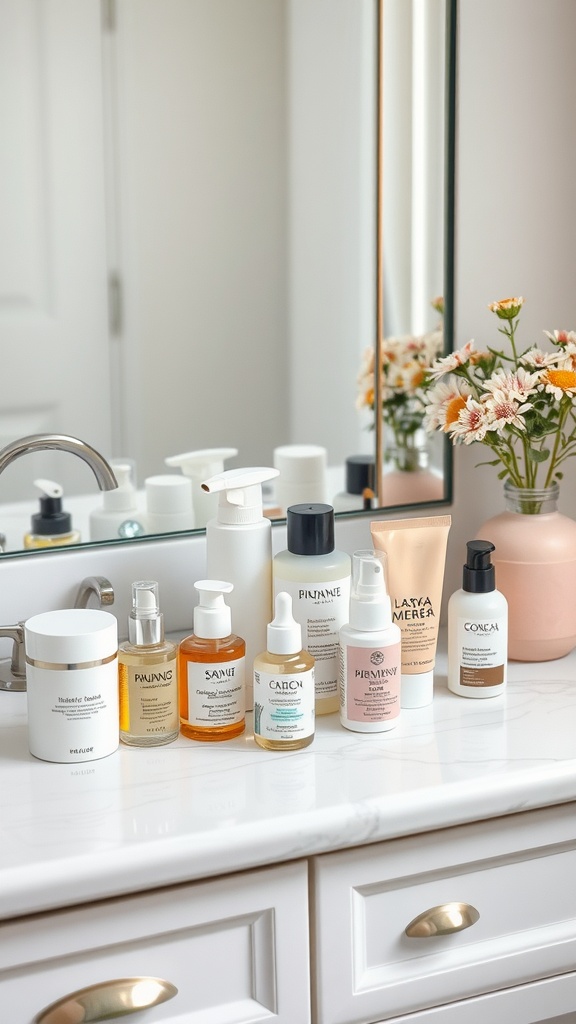
When it comes to skincare, picking the right products is key. The image shows a variety of skincare products lined up neatly on a bathroom counter. Each bottle and jar represents different formulations targeted at various skin concerns. There’s a mix of oils, creams, and serums, which can cater to different skin types like oily, dry, or combination.
Understanding your skin type is the first step. If you have oily skin, look for lightweight, non-comedogenic products. For dry skin, go for richer creams that offer hydration. Combination skin might need a mix of both. Pay attention to the ingredients; products with salicylic acid can help with breakouts, while hyaluronic acid is great for hydration.
Taking time to find what works for you can make a huge difference. You might even want to patch test new products to see how your skin reacts. With the right products in your routine, you’re setting yourself up for clearer skin and fewer breakouts.
The Role of Diet in Skin Health

The image shows a colorful array of fresh fruits and vegetables like bananas, bell peppers, blueberries, and more. These vibrant foods are packed with nutrients that can play a significant role in skin health.
When it comes to breakouts, what you eat matters. A diet rich in fruits and vegetables can help reduce inflammation and keep your skin glowing. Foods high in antioxidants, like blueberries and tomatoes, combat free radicals and support skin repair.
Hydration is another key factor. Many fruits and veggies have high water content, which helps keep your skin hydrated from the inside out. Think cucumbers and watermelon for a refreshing boost.
Moreover, incorporating healthy fats from sources like avocados can enhance your skin’s elasticity, while lean proteins support tissue repair. It’s all about balance. So, load up on a variety of these colorful foods to give your skin the nourishment it needs.
Regularly Changing Pillowcases and Towels
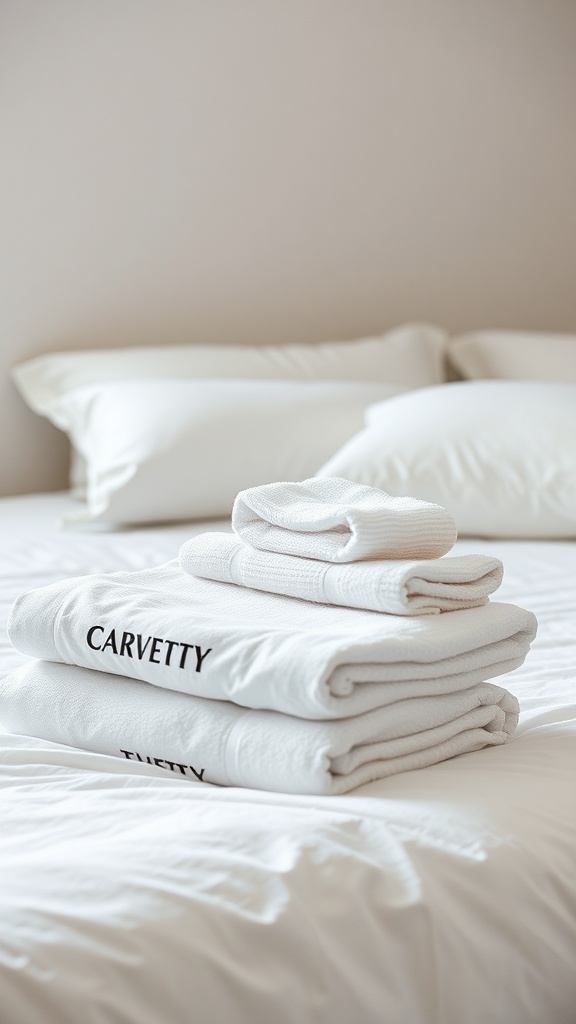
Keeping your skin clear is often about the little habits we maintain. One key habit involves changing your pillowcases and towels regularly. This simple act can make a big difference in your skincare routine.
Your pillowcase collects oils, dirt, and bacteria from your skin and hair. If you sleep on the same pillowcase night after night, you risk transferring all of that grime back onto your skin. This can lead to breakouts and irritation. Fresh pillowcases can provide a cleaner, safer sleeping surface for your face.
Similarly, towels can harbor bacteria, especially if they are damp. Using a clean towel each time you wash your face or after a shower is vital. It helps ensure that you’re not reintroducing dirt and oils to your freshly cleaned skin.
Ideally, swap out your pillowcases once a week and your towels every few days. This small change can greatly enhance your skincare efforts and help keep your skin looking its best.
The Importance of Consulting with a Dermatologist

Seeing a dermatologist can be a key step in managing breakouts effectively. In the image, you can see a patient listening attentively as a dermatologist discusses her skin concerns. This kind of one-on-one attention is essential.
Dermatologists have specialized knowledge about skin issues. They can provide personalized advice tailored to your skin type and specific problems. This is not something you usually get from general skincare tips found online.
A consultation allows you to discuss your skincare routine and any products you’re using. The dermatologist can suggest changes that might improve your skin. They might recommend treatments like topical medications or therapies that you wouldn’t consider on your own.
Moreover, a dermatologist can help identify the root cause of your breakouts. Whether it’s hormonal changes, dietary factors, or stress, knowing what’s triggering your skin issues is vital for effective treatment.
In short, while at-home remedies can help, consulting with a dermatologist takes your skincare to the next level. It’s not just about treating breakouts; it’s about understanding your skin and how to care for it best.
